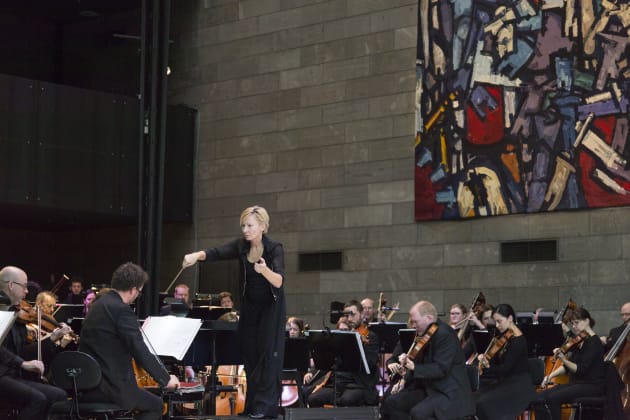What makes a dancer 'musical'?
How do you define a musical dancer? Karen van Ulzen asked Nicolette Fraillon, chief conductor for the Australian Ballet.
After 14 years as the musical director and chief conductor at the Australian Ballet, Nicolette Fraillon sees at first hand how dancers respond to music. She says a musical dancer is someone who understands, “whether through training or natural musicality, the architecture of the music. Whether that's emotional or religious or structural. [They know] how the steps relate to the music and therefore their interpretation of the choreography relates back to the music.”
She says her colleague David McAllister is an example of a dancer who is innately musical. “He doesn't have a lot of musical training, doesn't read music, but never in his career did he count the music. Often in dance people just relate the music to the count and beat. But he never did that, he would just listen, understand and dance the phrasing of the music.”
She says the Australian Ballet has loads of really musical dancers, like [former dancers] Lucinda Dunn, Steven Heathcote and Robert Curran. “They would just breathe with the music and follow the performance fluctuations of the music. Often that has nothing to do with what a conductor is doing. For example, if they are dancing to a violin solo, no two violinists will play it the same way, but the dancers will react to the musicians themselves... That's a musical dancer for me, someone who is responding also to the unique interpretation that the artists in the pit are offering them.”
Most dancers don't have much training in music as part of their dance studies. Nor does Fraillon think it is necessary, but she does think it would be useful, particularly for aspiring choreographers. She cites Balanchine and Kylian as choreographers who really understood music. “The greatest choreographers are those who are very musically literate. In the late 19th and early 20th century, the Ballets Russes days, artists were educated in all the relevant art forms.
“Balanchine, who came from musical parents, had to decide between composition and choreography, and went on to actually create piano arrangements of the orchestral works. He was a really proficient musician.
“Stravinsky knew a hell of a lot about dance and played piano for dance rehearsals and adapted his own work to the needs of various dancers.”
For dancers she feels that musical literacy would be a bonus for such practical things as being able to ask a pianist or conductor to play something a different way or understanding the musical structure underlying a work, to having an understanding of the history of musical development and its relationship to classical dance.
“Both art forms, music and dance, are classical forms which go back a couple of hundred years and I firmly believe that any great artist needs to understand where their artform came from to do something new with it. To give a really good performance you need to know a lot about all kinds of angles. And given the premier partnership between music and dance, I think it would help a lot of dancers.”
Fraillon says she is in awe of how dancers are able to perform and hear and respond to the music at the same time. "There are studies that show that the more vigorously you move the less you're actually listening, because the activity compromises how much you’re actually hearing. So I'm always in awe of dancers who are performing on stage at a rate of knots and still listening.”
See Emma Sandall's insightful exploration of the subject of musicality in dancers in the August/September issue of 'Dance Australia'. Buy the magazine from your favourite retailer, or subscribe here, or purchase an online copy via the Dance Australia app.



